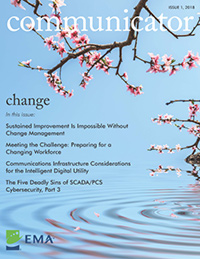By now everyone has heard of the crypto-currency Bitcoin. Crypto-currency made famous the underlying technology that makes Bitcoin possible. That technology is blockchain, and it is a fundamental technology disrupter that impacts how utilities will soon conduct business. As a result, Utility Managers will need to understand what blockchain is, the types of blockchains in use, and how and where it will be used in their business.
A quick blockchain primer is in order. So what is blockchain? Blockchain is a distributed ledger for digital assets that stores, alters, and transfers information with a unique digital ID. A blockchain has three core elements:
- P2P (Peer-To-Peer) networks
- Open networks, enabling transactions with anyone.
- Private networks belong to a group of entities who have decided to transact with one another, like in an energy trading exchange.
- Consensus Mechanism – how transactions are made and verified
- Consensus ensures that the shared ledgers are exact copies, and lowers the risk of fraudulent transactions, because tampering would have to occur across many places at exactly the same time
- Bitcoin uses Proof of Work as a consensus mechanism. Proof of Authority is now emerging as the mechanism of choice because it uses significantly less energy.
- Shared Ledger/Database
- Immutable, meaning that it is unchanging over time or unable to be changed
- Exists in cloud and on all nodes of the P2P network
- Read/write permissions exist
A major benefit of blockchains is that they reduce transaction friction (costs and restraints associated with transactions) and provide better transparency because they eliminate the need for a middle-man. They also create one secure record, and eliminate back office functions.
As a result, a water utility will soon be impacted by blockchain in a variety of business areas. Examples include:
- Regulatory reporting
- Automated procurement
- Partnership initiatives that share resources
- Asset lifecycle management to improve reliability
- Metering and Billing
- Water rights/trading/resource management
- Tracking of water quality data or to provide water quality forecasts
We will discuss in an upcoming post how blockchains enable the creation of Smart Contracts and the available benefits.

